![How to Implement a Customer-Oriented Marketing Strategy and Drive SaaS Growth [Examples Included]](https://blog-static.userpilot.com/blog/wp-content/uploads/2021/12/A19C3957-823C-4383-91C0-13DDBEC89520_cff5488901e39d5ba7eb111e99d7e981_2000.png)
How to Implement a Customer-Oriented Marketing Strategy and Drive SaaS Growth [Examples Included]
Try Userpilot Now
See Why 1,000+ Teams Choose Userpilot

What is customer orientation?
Customer orientation is a business approach that involves centering the customer’s needs in all business decisions.
Where many companies’ goals are focused on increasing profit, cutting costs, lowering churn, etc, the focus of customer orientation is on understanding what your customer’s goals are first and helping them achieve them with your product.
This approach will in turn drive the important business metrics up.
Customer orientation says customer first (truly) while all other variables are adjusted based on that.
What is a customer-oriented marketing strategy?
A customer-oriented marketing strategy is a way of marketing your product using tactics centered around the customer and their goals across each stage of the user journey.
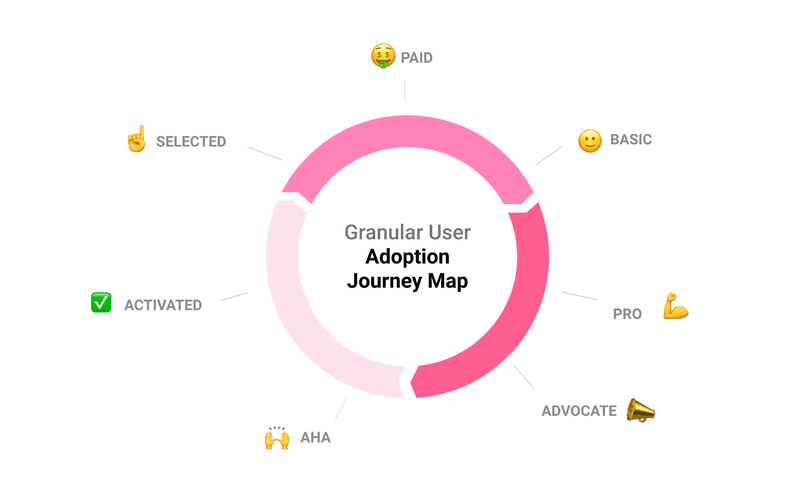
It’s not a marketing campaign you run for some time that brings you temporary traffic and signups. It’s not testing channels that have worked for your competitors and that you think can work for you too.
It’s not just about making sales and pushing people to buy.
Customer-oriented marketing strategy involves the use of user and target market research to understand customer needs and behaviors, then tailoring the perfect approach to connecting with, and converting them.
Take Ahrefs for example.
They tried several marketing tactics like placing ads in relevant industry journals and running co-promotions with other SaaS companies, which all brought them temporary results.
It’s when they decided to focus on a content strategy that answered questions their potential customers were looking for while showing them how to solve them using their product when real results started showing up.
Why being customer-oriented is important for SaaS companies?
If your customer base doesn’t like or have a positive association with your brand, you stand a lesser chance of building a long-term relationship with them. This means increasing churn rates.
This is why placing focus on giving them the best customer experience, support, and ensuring customer satisfaction is important.
Here are more reasons SaaS companies need to adopt customer-centric marketing tactics.
Customer-oriented marketing drives customer loyalty and satisfaction
If you continuously invest in listening to the voice of your customer and understanding their needs, this will help uncover insights.
You can then use these insights to address potential concerns in your communication and in what the product delivers, translating into more happy customers.
You can start by collecting NPS responses.
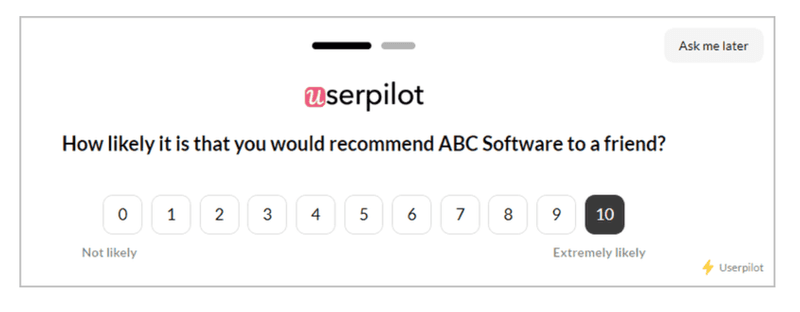
Simply using net promoter score (NPS) responses to ask customers why did they choose a certain score will get you the necessary insights you need to better communicate with your customers.
Putting the customer first and becoming customer-centric will bring in more loyal customers and ultimately drive word of mouth.
Customer-oriented marketing enhances the customer experience
If everyone is trying to sell something to the same users, how do you stand out or convince them to buy from you?
Marketing that broadcasts the same message to everyone and hopes for the best was always about you and your product.
Customers don’t care about that. They care about how you help them solve their problem.
A customer-centric approach to marketing means your main focus will be on connecting with the customer’s point of pain and pulling them to your product as a solution, rather than just trying to get them to buy.
Customer-centricity shows you have an understanding of customers’ needs and are genuinely trying to help them solve their problems, and improve their experience with your product.
A customer-oriented approach helps you build better products
Your product exists to solve the need(s) of your users – this is the only way you’ll increase the rate at which customers return and use your product month after month.
If you’re not listening to your userbase and getting insights from them regularly, you’ll not be able to build a product they’ll truly love and stick with, not to mention recommend to others.
Customer orientation helps you develop better customer relationships and communicate more efficiently with them.
With the insights you get from putting your customers at the center of your business processes, you can shape the future of your products and product features to meet customer preferences, and better answer their needs.
5 key elements of a customer-oriented marketing strategy
Remember that customer orientation shifts the focus from your product to your customers.
When building a marketing strategy that is customer-centric, these are a few pillars you must consider.
#1 – Continuously collect customer feedback
With in-app micro surveys, you can collect data and gauge customer satisfaction from user feedback.
Continuously collecting customer feedback data helps you improve your product and usability, discover and remove the present friction points and also help your customer support team understand where users struggle.
For best results, use different customer satisfaction surveys at the different points of the customer’s journey.
For example, after you’ve launched a new feature you can use a survey to collect feedback from the users who interacted with it.
Give them a chance to tell you what they like about the feature, and how it can be improved.
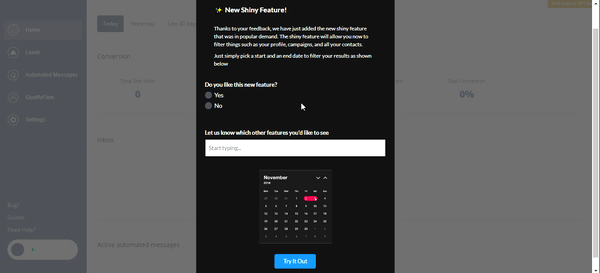
These surveys can also be used to understand why customers churn. Nobody just opts out of a product that they consider useful to them.
By using churn surveys you can find out why people are leaving and use the data to improve your product and the customer experience in the future.
See how Asana does this with a quick one-question survey with predefined answers based on common reasons customers close their accounts.
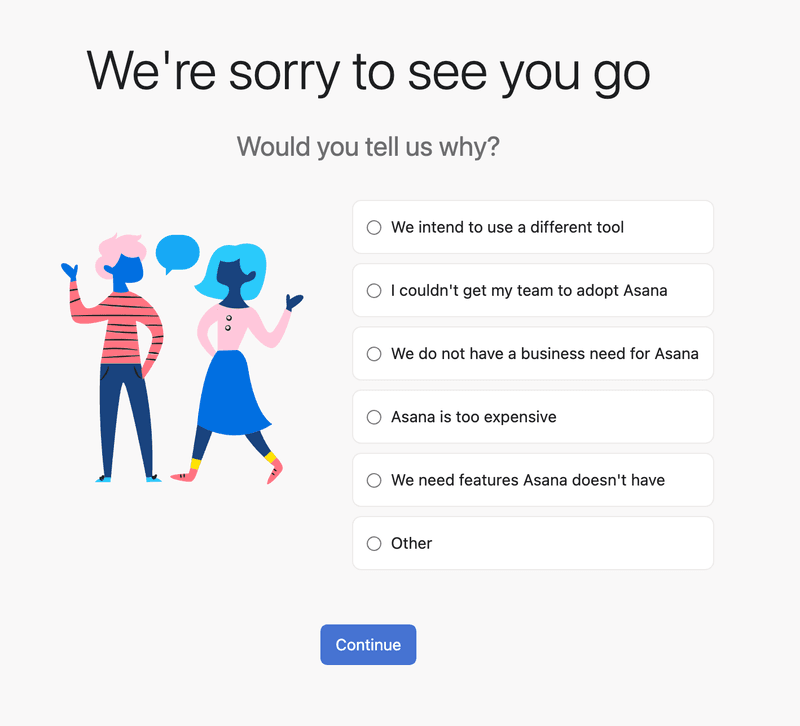
#2 – Use feedback and act on insights
It’s one thing to collect user feedback, and another thing to act on it.
A true customer orientation strategy requires you to not only collect feedback but also act on data.
Customers may find a certain feature confusing or hard to use. They may need a feature that you’re currently missing or have no idea that a specific and relevant feature exists.
The data you collect will give you these insights and help you uncover the necessary product improvements you need to work on in order to increase customer experience.
For example, Postfity’s customers kept asking for a particular feature and since adding it was going to bring value to their users, they prioritized implementing it.
After it was launched, they made sure to announce this to customers who had requested it, therefore acting on the feedback they collected.
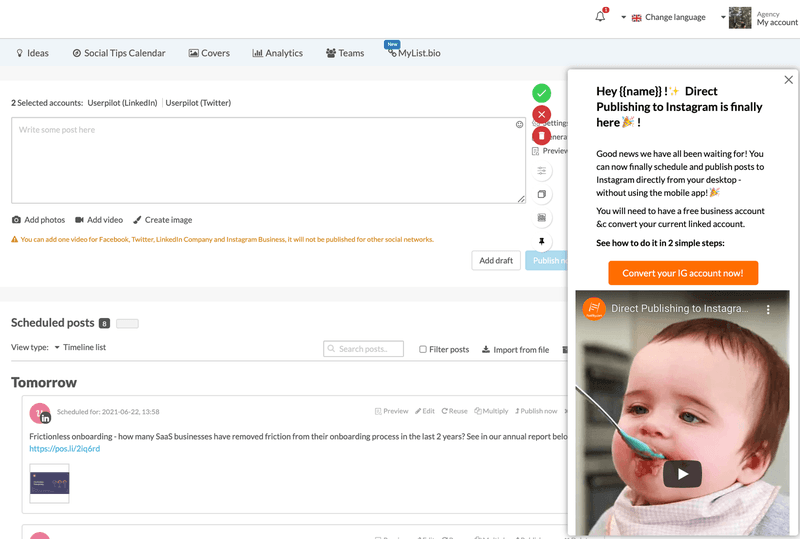
#3 – Build contextual interactive experiences based on customer behavior
For some customers, it’s easy to find their way around your product, for others it’s not.
The same goes for how to use new features.
Using tooltips, checklists, and other UI patterns that let you build contextual experiences, it’s easier to guide customers to quickly see the value of your product.
You can use heat maps and data collected from customer surveys to uncover friction points in your product and build in-app guidance to help users engage with your product in a seamless way.
If your SaaS product has a steeper learning curve, you’ll benefit from in-app guides and contextual interactive walkthroughs that show users how to use a feature when they engage with it.
By doing this you shift the focus from simply showing users your many fancy features to helping them achieve their goals using these features.
And to provide these contextual experiences on mobile, you can create targeted onboarding flows using slideouts, carousels, and push notifications—all without writing extra code.
Kommunicate for example guides users on how to personalize their chatbot for the first time using a series of tooltips that trigger one after another.
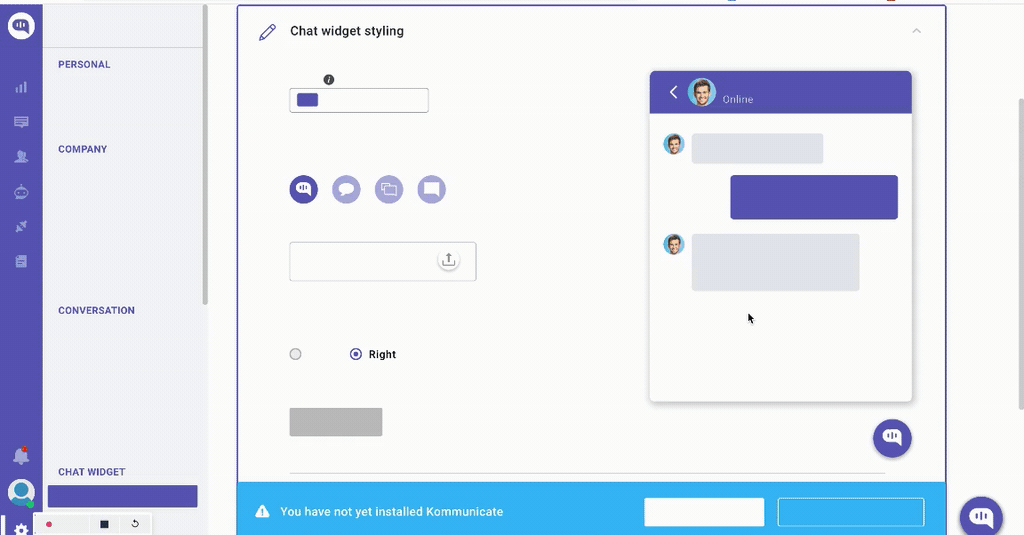
#4 – Personalize content and messaging based on customer needs
Your SaaS most likely has more than one customer type.
And these different customers have different needs and problems they’re using your product for.
By personalizing your marketing message, content, and even in-app communication (beyond using their name), you’ll be able to attract the right customers and improve their product experience.
In your product, this means:
- Offering a frictionless signup flow to bring users into the app as fast as possible
- Replacing empty states with personalized content to help users understand the value of your product faster
- Use welcome screens to learn more about the user and personalize their journey inside the product based on their needs
Here’s an example of a welcome screen from Backlink Manager that uses a micro survey to collect customer information on the main job to be done by them so they can personalize the onboarding experience based on it.
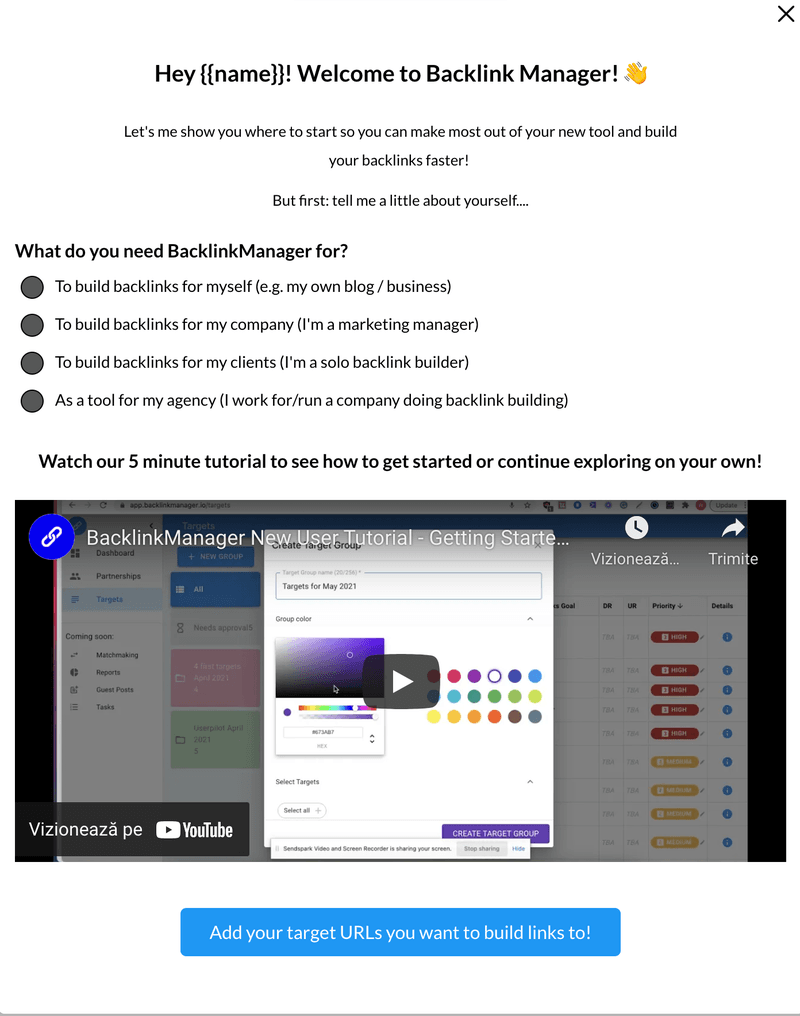
#5 – Offer great customer service and support
For your customer-oriented marketing to work, you need to offer excellent customer service and support.
Because the customer’s journey with your product goes beyond acquisition, you need to delight them and keep showing usefulness at every stage. This is where good customer service and support come in.
The customer should be able to access help and trigger self-service support wherever they are in your product.
Such support elements include in-app resource centers with links to necessary resources and guides on how to solve a problem they may have, and also chatbots with pre-programmed messages or chats with a live member of your customer support team.
Postfity, for example, includes a guide that walks users using tooltips on how to use their new feature Posting on Instagram.
Users can launch this directly from inside the app’s resource center.
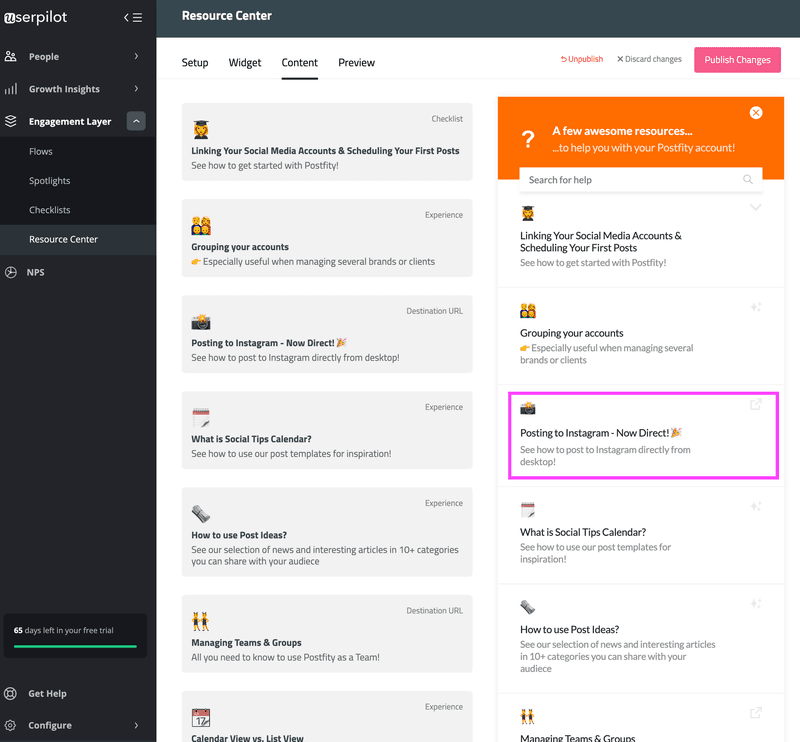
Metrics to measure the success of your customer-oriented strategy
It’s not enough to adopt a customer-oriented marketing approach, you need to make sure that the strategies you’re implementing are working too.
To do this there are several important metrics to monitor:
- Net Promoter Score (NPS) surveys: this measures loyalty by asking customers how likely they are to recommend your product to others on a scale of 0-10.
- Customer Satisfaction score (CSAT): this measures how satisfied or not customers are with your product.
- Customer Effort Score (CES): this measures customer experience and the ease of using your product.
- LTV: customer lifetime value is an indication of how satisfied they are with your product because the more value they get, the higher their chances of sticking with you.
- LTV to CAC ratio: this measures the lifetime value of your customers against the cost of acquiring them. A customer-centric approach will drive LTV up and CAC down by providing more value and satisfying customer needs better.
- Churn rate: a low churn rate means your customers are finding your product valuable and your efforts of acquiring and retaining customers have paid off.
Conclusion
Good customer care is how any company stays successful. Your customers and their needs should be the center of your entire organization.
Customer orientation and customer-oriented marketing will help you do this.
When SaaS companies implement this approach, they improve the level of service and support given to customers. This, in turn, increases the growth rate of your entire company.
Ready to include customer orientation in your product strategy? With Userpilot you can build experiences that promote customer-centricity. Book a demo call with our team and get started!







